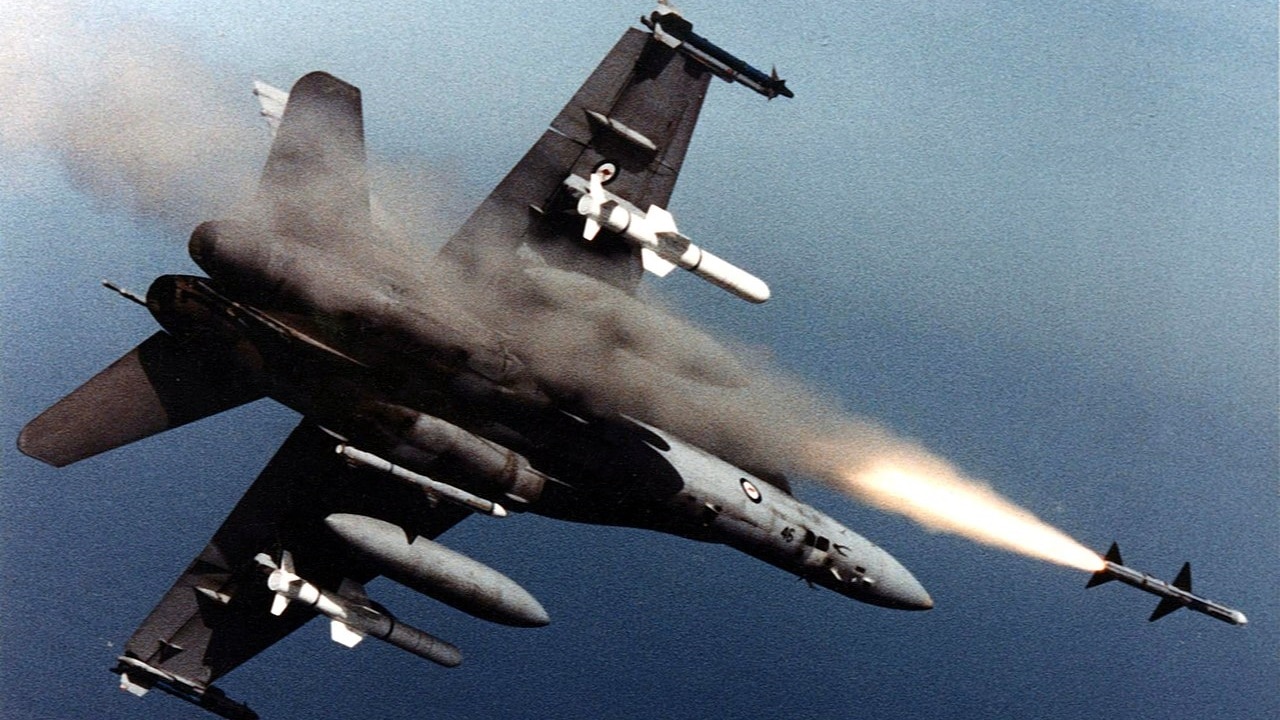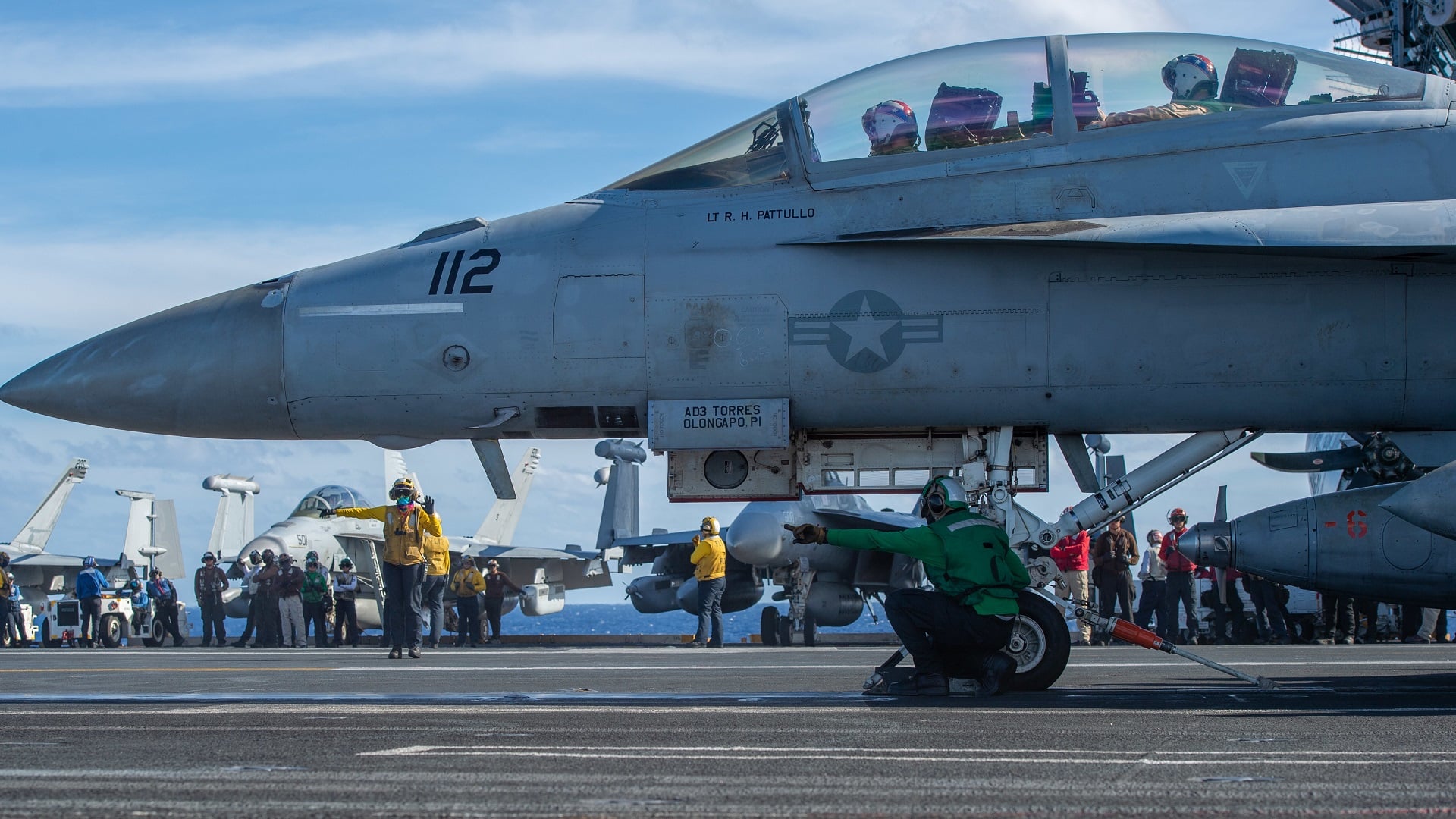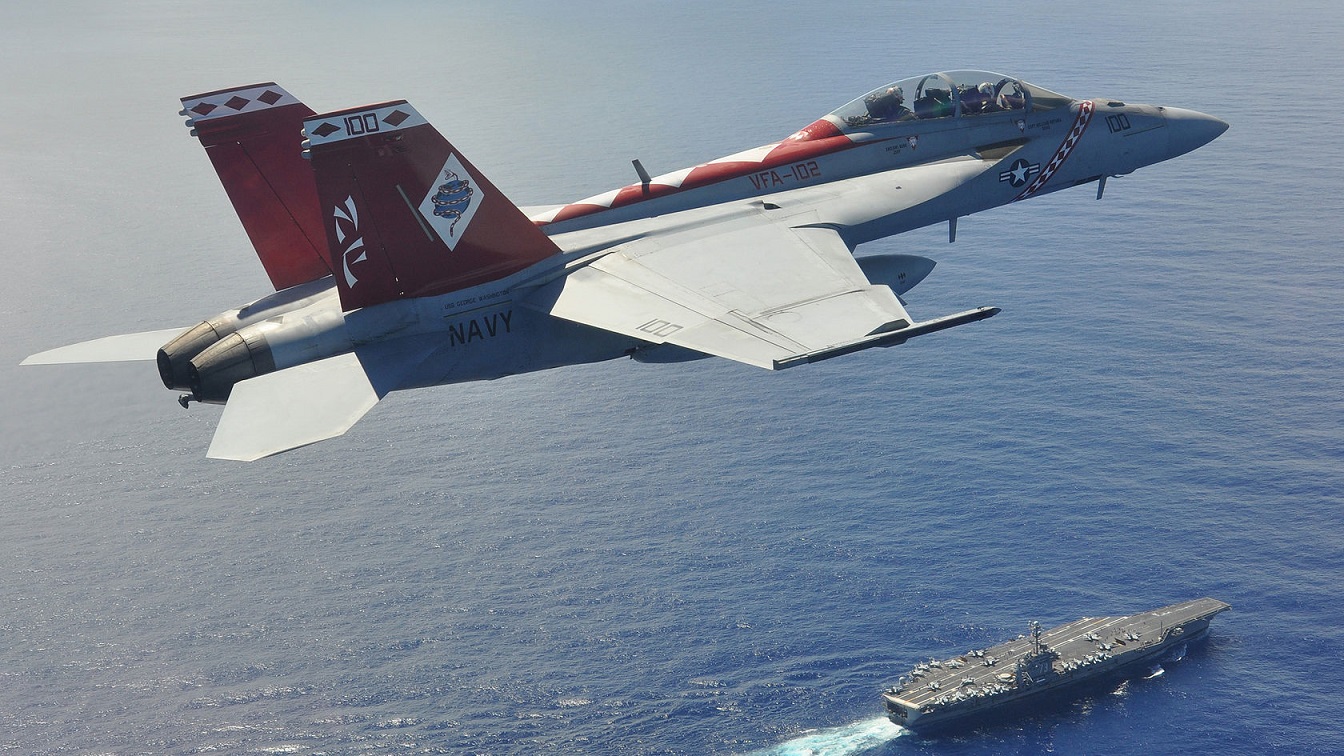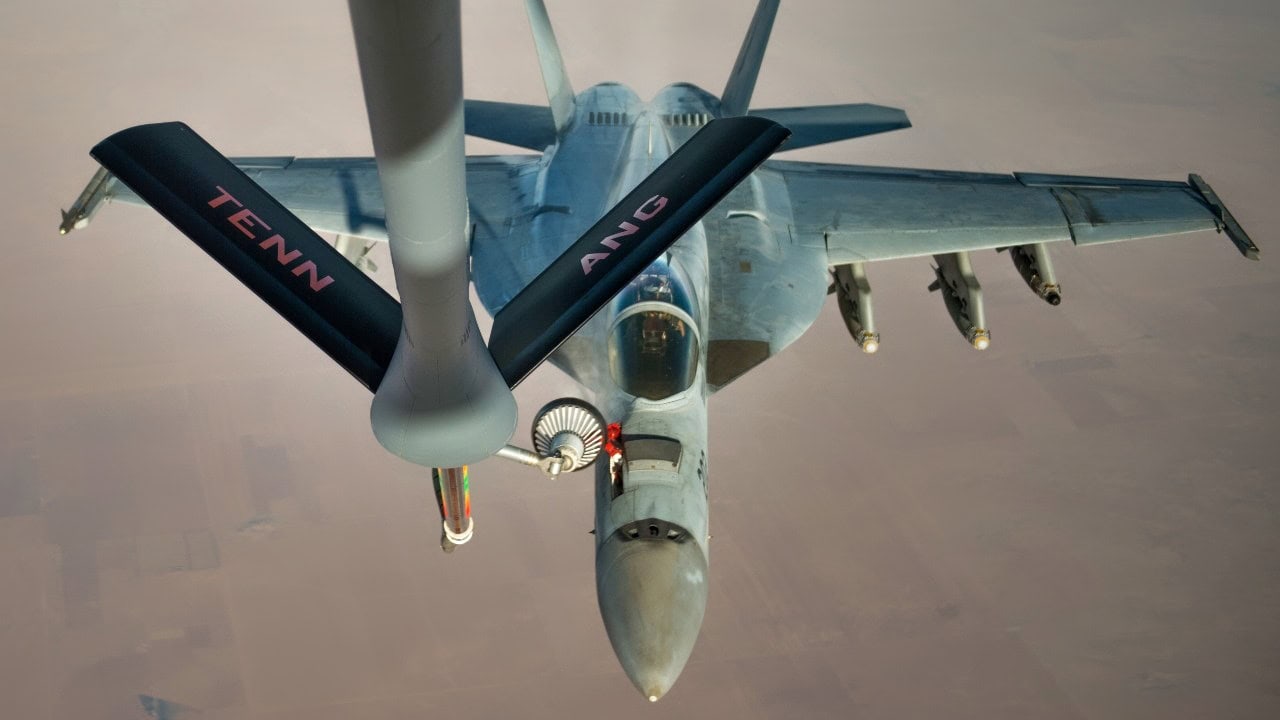Key Points: A US Navy F/A-18E Super Hornet was lost overboard from the USS Harry S. Truman in the Red Sea on April 28th, reportedly after the carrier maneuvered sharply, potentially due to a Houthi attack attempt.
-This incident occurs amid an ongoing US campaign against the Iranian-backed group and speculation that the Trump administration may be shifting tactics.

A Royal Australian Air Force McDonnell Douglas F/A-18A Hornet (s/n A21-46) firing an AIM-7M Sparrow missile. The aircraft also carries another AIM-7, two AGM-84 Harpoon missiles and two AIM-9M Sidewinder missiles.
-Instead of primarily hitting infrastructure, the US might now focus on targeting Houthi leadership, potentially mirroring the strategy used in the 2020 strike against Iranian General Soleimani, aiming to degrade the group’s operational capability more directly.
Did the Houthis Cause an F/A-18 Super Hornet Fighter to Go Overboard?
On Monday, April 28, the US Navy carrier USS Harry S. Truman had one of its single-seat F/A-18E Super Hornet fighter aircraft accidentally roll overboard off of the flight deck and into the Red Sea during an attack on the ship. The mishap reportedly occurred after the carrier made a sharp maneuver to avoid incoming fire from Yemeni Houthi rebels, according to statements from both the US Navy (USN) and another US Government official.
The USN statement reads that the F/A-18E “was actively under tow in the hangar bay when the move crew lost control of the aircraft.” The USN and other officials who offered details on the cause of the Truman’s hard turn did so on the condition of anonymity and in order to avoid discussing any details of ongoing operations.
One sailor suffered a minor injury when the jet and its tow tractor rolled off the flight deck, but the carrier strike group and its air wing both remain “fully mission capable,” read the USN statement. The USN states that the F/A-18E, which is the most modernized version of the original 1970s F/A-18A/B design of the aircraft, is valued at $67.4 million.
War in the Red Sea
The carrier making an emergency avoidance maneuver was reportedly due to heightened concerns about the Houthis attempting to strike the vessel with an anti-ship missile (ASM). This loss of the aircraft at sea took place after the Houthis claimed a US missile strike destroyed a migrant detention center in Yemen on Sunday night in which some 68 African migrants and dozens more were injured.
This strike and other previous attacks by the US on Yemeni port facilities, it is assessed, have created an imperative within the ranks of the Houthis to inflict serious damage on a US carrier in revenge.

221227-N-DU622-1227 PHILIPPINE SEA (Dec. 27, 2022) An F/A-18F Super Hornet from the “Fighting Redcocks” of Strike Fighter Squadron (VFA) 22 prepares to launch from the flight deck of the aircraft carrier USS Nimitz (CVN 68). Nimitz is in 7th fleet conducting routine operations. 7th Fleet is the U.S. Navy’s largest forward-deployed numbered fleet, and routinely interacts and operates with 35 maritime nations in preserving a free and open Indo-Pacific region. (U.S. Navy photo by Mass Communication Specialist 2nd Class Justin McTaggart)
The USN has been in an active shooting war with the radical Islamic rebels in the Red Sea since early 2024. This conflict has turned into a military campaign targeting the Houthis’ facilities and their critical infrastructure. The Houthis are an Iranian-financed and supported group that launched a series of attacks on ships transiting the Red Sea in late 2023-early 2024.
The Houthis have stated that these attacks what they declare is a retaliatory response to Israel’s war in Gaza. The upsurge in these attacks prompted the Pentagon to send the USS Harry S. Truman and its air wing to be deployed to the Red Sea last year.
In February, the Truman was involved in an accident when it collided with a merchant vessel while operating in the vicinity of Port Said in Egypt. The incident later prompted the Navy to relieve the carrier’s commanding officer of duty.
On Sunday, US Central Command (CENTCOM) quantified that since escalating this campaign against the Houthis last month, more than 800 targets have been hit, and the naval units in the area will “continue to ratchet up the pressure” until “freedom of navigation and American deterrence in the region” have both been restored
Potential Change in Tactics Against Houthis
While these attacks continue, there are monitoring organizations that state the US military is in the process of changing the course of its continuing war on the Houthis. The new strategy supposedly has a new orientation in targeting priorities.
This new tack involves what is being characterized as the US Trump administration shifting the conduct of the war in Yemen from focusing US Navy firepower on Houthi military infrastructure to now instead take out the group’s leadership.

Block III Super Hornet. A U.S. Navy F/A-18F Super Hornet aircraft assigned to Strike Fighter Squadron (VFA) 102 flies past the aircraft carrier USS George Washington (CVN 73) in the Philippine Sea Aug. 21, 2013. The George Washington was underway in the U.S. 7th Fleet area of responsibility supporting maritime security operations and theater security cooperation efforts.
This strategy may be a repeat of what the first Trump Administration did to try and combat Iranian-backed attacks in the region.
Trump reportedly made the decision to kill Iranian Gen. Qassem Soleimani months before the strike actually took place. This targeted elimination of the Iranian military leader took place in January 2020 when he arrived in Baghdad for a meeting with the Iraqi Prime Minister.
Soleimani, a senior leader of the Iran Revolutionary Guard Corps (IRGC), was described by William H. Tobey, a Senior Fellow at Harvard’s Belfer Center for Science and International Affairs, as “shrewd, ruthless, and experienced, hence an inspiration for militants.”
Tobey’s assessment at the time was that “first, Iran’s paramilitary and terrorist capabilities are damaged. Second, there is now no possibility (if ever there was) that Tehran will negotiate with the Trump Administration before 2021; which will end first, the maximum pressure campaign or Iran’s ability to resist it?
Third, countries feeling aggrieved or attacked often become more risk tolerant; Tehran escalated the conflict from economic sanctions to paramilitary strikes. President Trump is betting that killing Soleimani will foreclose the military path of resistance, but Iran’s Supreme Leader will have his say too.”
In this case, the Trump strategy worked by degrading Iran’s capabilities and overall financial wherewithal for the IRGC to continue operations of the kind now seen with the Houthis. It could very well be that by changing targeting priorities in the Red Sea, this success could be repeated.
About the Author:
Reuben F. Johnson is a survivor of the February 2022 Russian invasion of Ukraine and is an Expert on Foreign Military Affairs with the Fundacja im. Kazimierza Pułaskiego in Warsaw. He has been a consultant to the Pentagon, several NATO governments and the Australian government in the fields of defense technology and weapon systems design. Over the past 30 years he has resided in and reported from Russia, Ukraine, Poland, Brazil, the People’s Republic of China and Australia.

